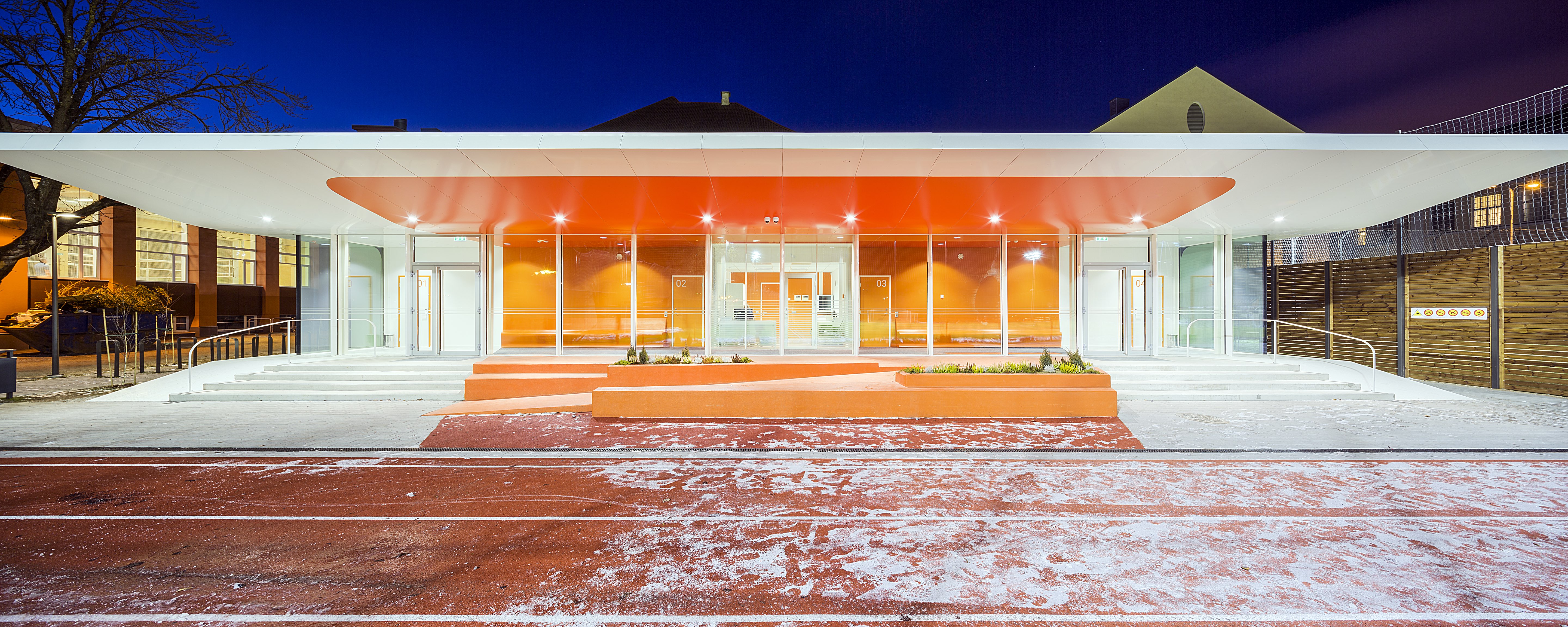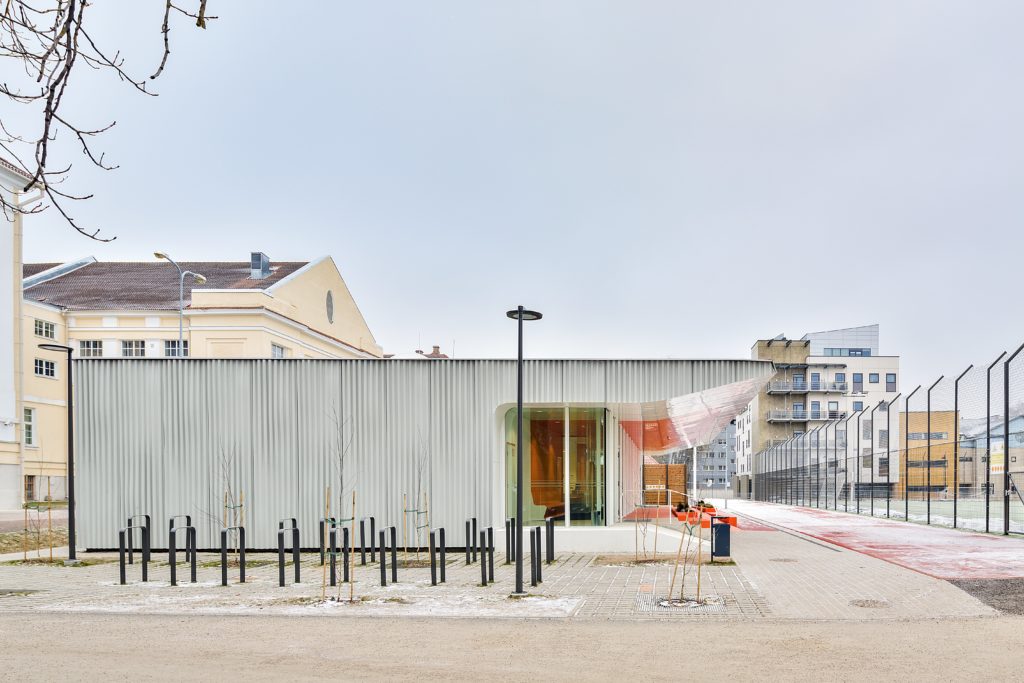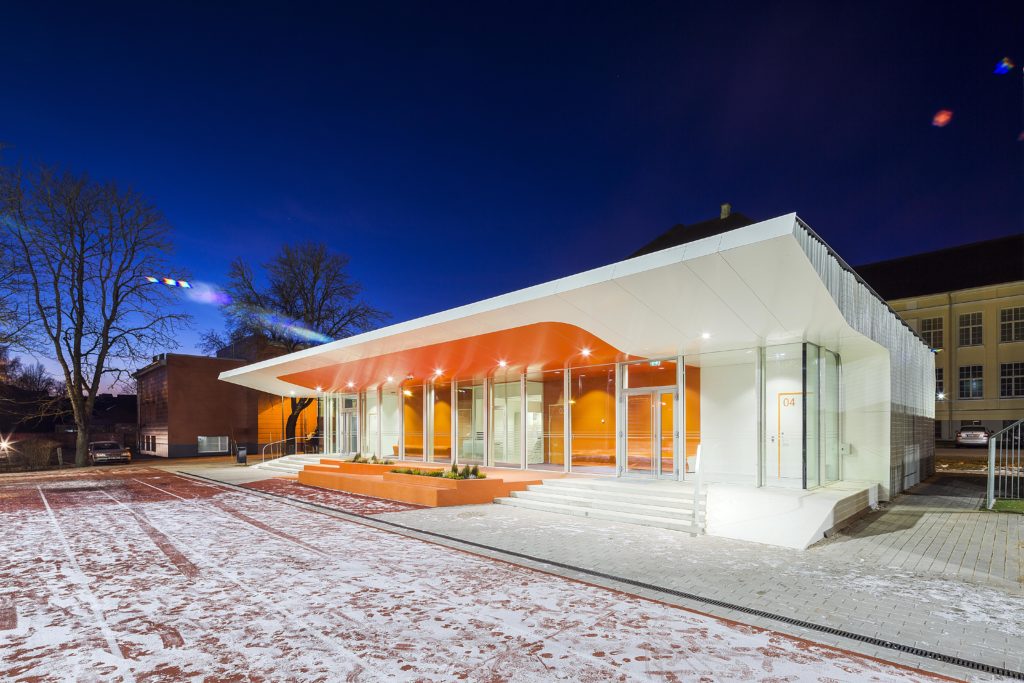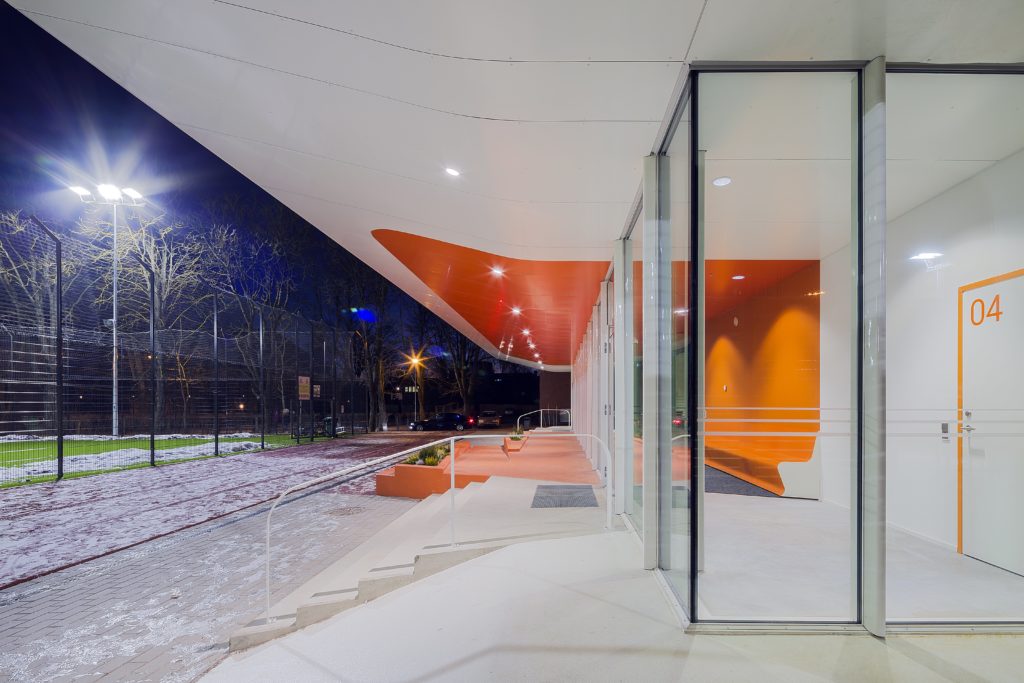As a contractor, the city of Tartu is glad to have participated in the international cooperation project Osirys that gave us the stadium building of Reinik secondary school as its demo building. Such innovation projects always include a fair amount of unpredictability and contingency – will we achieve everything we planned, can we meet the deadlines and reach the goals – and obviously we couldn’t do without such issues in the given project either. This makes us all the more grateful to our Estonian partners whose contribution and flexibility helped us to reach such good results.
Priit Metsjärv, Head of Construction Service of Tartu City Government
The stadium building of Mart Reinik school originated from the cooperation project between almost 20 companies from 12 countries named Osirys. The project aimed at developing façade and indoor wall elements and take a major step forward in the development of materials of a smaller carbon footprint and the respective construction elements. For the given purpose, among other things, innovative biocomposite materials were developed.
Tartu joined the project at the stage when most of the material studies and solutions had already been worked out. The aim of the partnership was to construct in Tartu a demo building that would test the given solutions in real conditions.
The city of Tartu selected the stadium building of Reinik school as the demo building as there had been an acute need for it already for a long time. It is quite curious that through the given project a simple building accommodating changing rooms and showers, storage and coaches’ facilities became a well-considered architectural work.
Tõnis Arjus
















































































































































































































